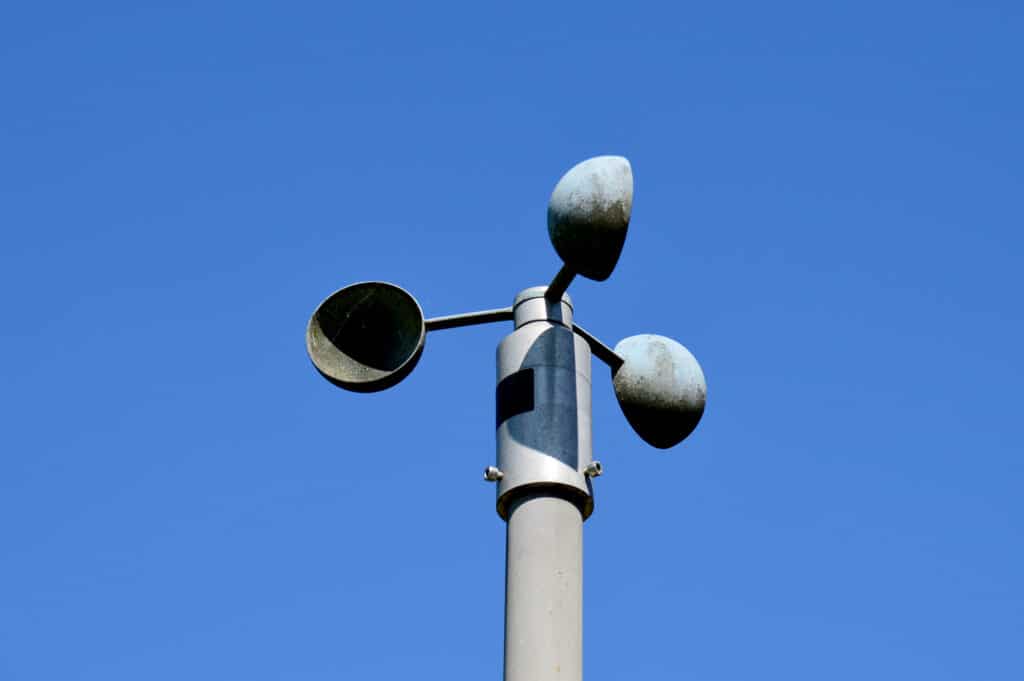Contrasting Digital and Mechanical Anemometers: Which is Right for You?
All You Required to Understand About Anemometers: Exactly How They Function, Why They Matter, and Where to Utilize Them
Anemometers, though commonly forgotten in the world of clinical instruments, play a crucial role in various fields, offering useful understandings into wind speed and air flow patterns. Recognizing the technicians behind these tools is crucial for any person seeking to harness the power of this information. From meteorologists tracking weather patterns to designers designing structures with wind loads in mind, the applications of anemometers are significant and varied. As we delve right into the intricacies of anemometer innovation, we will certainly uncover the inner operations of these tools, their relevance, and the vital factors to consider when selecting the ideal anemometer for details applications.

Anemometer Essentials
A vital tool made use of to measure wind rate and instructions, the anemometer plays an important duty in weather forecasting and numerous sectors. An anemometer normally consists of three or 4 mugs that turn in the wind, a vane that aims into the wind, and sensing units to track the movements or turnings.
There are various kinds of anemometers available, consisting of mug anemometers, vane anemometers, hot-wire anemometers, and sonic anemometers, each with its one-of-a-kind features and applications. Cup anemometers are commonly used for fundamental wind rate dimensions, while vane anemometers are preferred for directional measurements.
Principles of Anemometer Operation
Building on the fundamental understanding of anemometer basics, the concepts of anemometer operation clarify the mechanics behind wind rate and instructions dimensions. Anemometers operate the principle of air movement impacting a sensor, creating it to turn. Mug anemometers, for example, have 3 or more mugs that capture the wind, creating them to spin faster as the wind speed boosts. The turning rate is then exchanged a wind rate dimension. Vane anemometers, on the other hand, make use of a tail or a probe that straightens itself with the wind instructions, supplying a measurement of wind instructions based upon the alignment of the sensing unit. Hot-wire anemometers depend on a warmed cable that cools as wind overlooks it, with the price of cooling down identifying the wind speed. Ultrasonic anemometers step wind speed and instructions by evaluating the moment it takes for ultrasonic signals to travel in between transducers. Recognizing these concepts is important for precise and trusted wind measurements in numerous applications.
Relevance of Anemometers
Anemometers play an important function in measuring wind speed and instructions, providing vital data for weather condition forecasting, climate studies, environmental tracking, and aviation procedures. Meteorologists rely on anemometers to collect accurate wind data, helping them understand weather condition patterns, anticipate storms, and issue prompt warnings to the public. Wind ranch drivers use anemometers to assess wind problems and maximize electrical power production from wind turbines.
Applications Throughout Various Industries
Applications of anemometers extend throughout diverse industries, showcasing their adaptability and energy past meteorology. his comment is here In the eco-friendly power sector, anemometers play a vital function in evaluating wind conditions for wind ranch placements, making certain optimal energy production. Industries like construction and mining make use of anemometers to keep track of wind rates, vital for safety procedures, particularly when working at heights or in open-pit mines where solid winds can position dangers. Anemometers are also integral in the aviation industry, helping pilots in recognizing airspeed and wind instructions for risk-free take-offs and landings. The maritime sector gain from anemometers for ship navigating, helping sailors prepare for weather changes and readjust wikipedia reference paths appropriately. In farming, anemometers aid farmers in handling plant spraying by giving real-time information on wind rate to stay clear of drift. Anemometers locate applications in HVAC systems to enhance air flow and boost energy efficiency in structures. The diverse usage instances of anemometers emphasize their relevance throughout different markets, highlighting their important duty in improving operational safety and efficiency (anemometer).

Selecting the Right Anemometer for Your Needs
For general functions, a mug anemometer is suitable for gauging wind rate, while a vane anemometer supplies wind direction data. Hot-wire anemometers are perfect for low airspeed measurements, and ultrasonic anemometers use high accuracy and resilience.

Verdict
In conclusion, anemometers play a crucial role in determining wind rate and instructions across various sectors. It is vital to think about the relevance of anemometers in order to make enlightened choices when choosing the most ideal tool for gauging wind problems.
There are different types of anemometers offered, including mug anemometers, vane anemometers, hot-wire anemometers, and sonic anemometers, each with its distinct attributes and applications. Cup anemometers are generally made use of for fundamental wind rate measurements, while vane anemometers are liked for directional measurements. Hot-wire anemometers are suitable for low airspeeds, and sonic anemometers are perfect for high-precision measurements in research study and industrial setups.Building on the fundamental understanding of anemometer fundamentals, the principles of anemometer operation illuminate the auto mechanics behind wind speed and instructions dimensions. For general functions, a mug anemometer is appropriate for measuring wind speed, while a vane anemometer supplies wind instructions information.